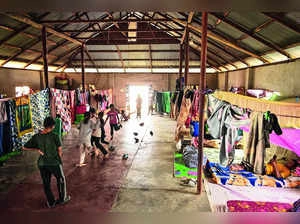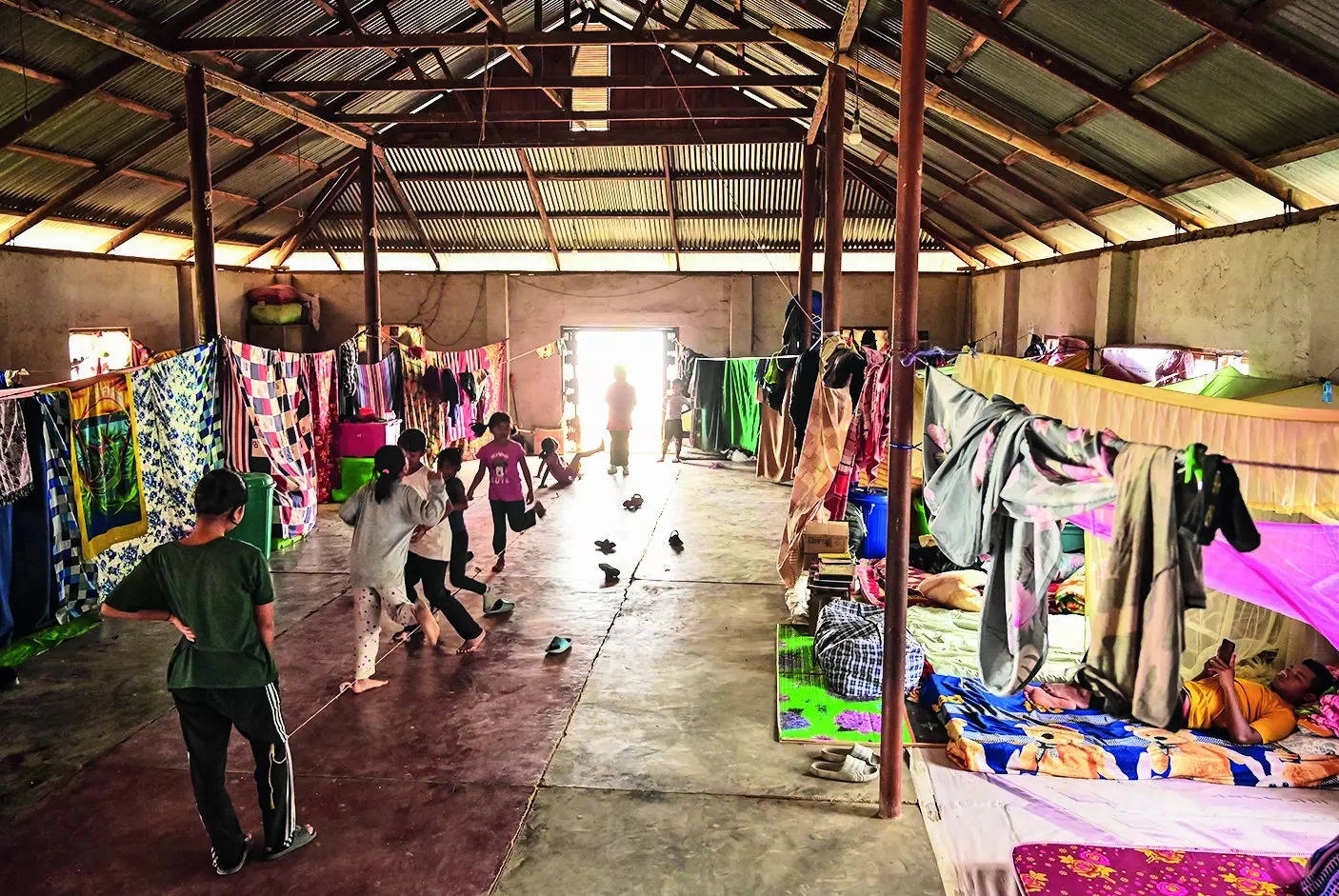Synopsis
Over 59,000 displaced people in Manipur face a second winter in relief camps, frustrated by slow progress in resettlement efforts. While the government claims to have built and approved thousands of homes, many remain unoccupied due to security concerns and inadequate support for rebuilding.

Frustration reigns high in the over 302 relief camps of Manipur which have been giving a temporary abode to over 59,414 people who were displaced from their homes after ethnic violence erupted last year. This will be the second winter that the inmates will continue in these relief camps.
In October, Chief Minister N Biren Singh said around 700 permanent houses have been built for displaced persons, and another 7,000 homes to provide temporary accommodation for those in relief camps have been approved by the Centre. But the situation on the ground is different. Officials said that in some houses, people have gone. "One issue which inmates have voiced is that they will return only after proper security arrangements are made." Around 2,370 temporary prefabricated houses had been constructed, 200 in progress and 430 yet to be started, the CM said.
People, who have been cooped up in these shelters, have been venting their frustration periodically. On August 1, police had fired tear gas shells, rubber bullets and baton-charged hundreds of internally-displaced people who held rallies demanding their return home in the border town of Moreh. Four people were injured. These protesters were sheltered in Imphal's Akampat. The protestors had claimed that they were living in a relief camp in harsh conditions and wanted the government to ensure security and funds to rebuild their homes and return.
A senior official in the Manipur government told ET, "The number of Meiteis staying in relief camps is around 25,000-30,000, rest might be Kuki-Zo people. However, it is hard to give any specific numbers". The CM had said in the assembly recently that 18,371 families were affected in the violence and around 14,857 families were residing in relief camps. There were 18,843 males in the relief camps and 21,245 females. There are 12,977 male children and 13,763 female children. The government of India has released ₹225.25 crore for the Internally displaced people (IDPs). Singh said the number of houses set on fire was around 11,133; houses destroyed were 4,569 and land of 5,554 farmers was affected.
PROVISIONS TOO LITTLE
The CM stated that one-time financial assistance of ₹1,000 for those living in relief camps had been released four times. Students of relief camps had been linked to nearby schools and colleges. TV sets had been provided at relief camps to provide offline classes to students. Complementary nutrition and personal hygiene support items have been provided. Facilities for reconstruction of documents like aadhaar card, ration card, bank passbook etc have been made. Agricultural crop compensation of ₹18.91 crore was released for 3,483 affected farmers for equivalent crop loss. Under the Permanent Housing Scheme, ₹21.68 crore has been released for 798 beneficiaries for construction of permanent houses, ₹25,000 (25% advance) per affected family whose house had been burnt/damaged was released to 2792 families as interim relief.
The chief minister said, "the ministry of urban development has sanctioned 7,000 houses for displaced persons. Another proposal for 2,000 houses is in the process. We had a talk with the Union Home ministry for additional funds so that those residing in schools and colleges can go back to their homes."
"The central government has facilitated evacuation of 20,000 students and others in distress to safer places and camps by airlifting some of them. The situation after fresh violence erupted is under control but the situation remains tense. Helicopters and drones have been deployed to help security forces in monitoring the situation and in evacuations," explained an official.
Over 10,000 Kuki-Zo people had taken shelter in neighbouring Mizoram, with at least 2,000 of them having come back to Manipur.





